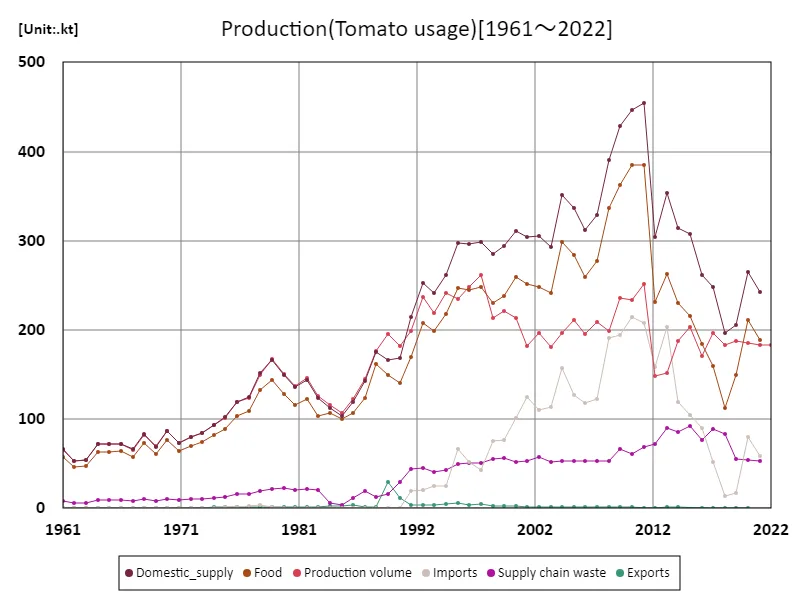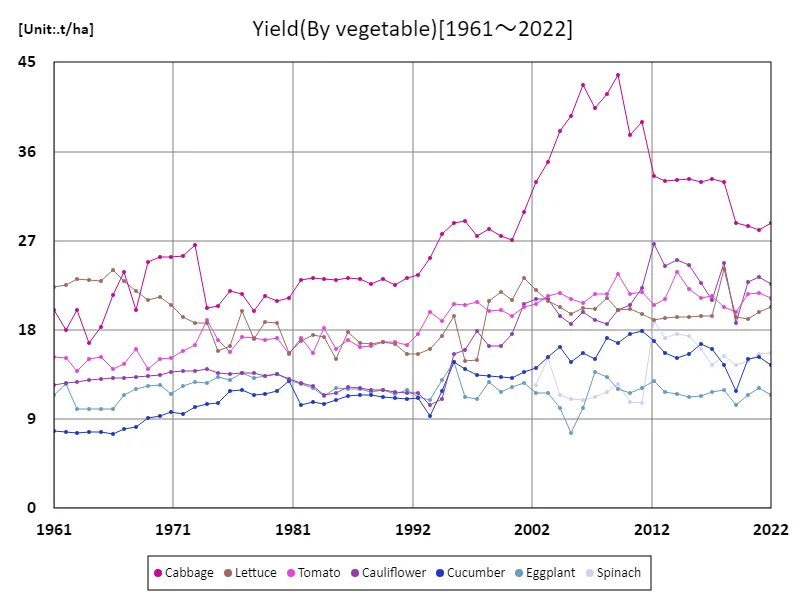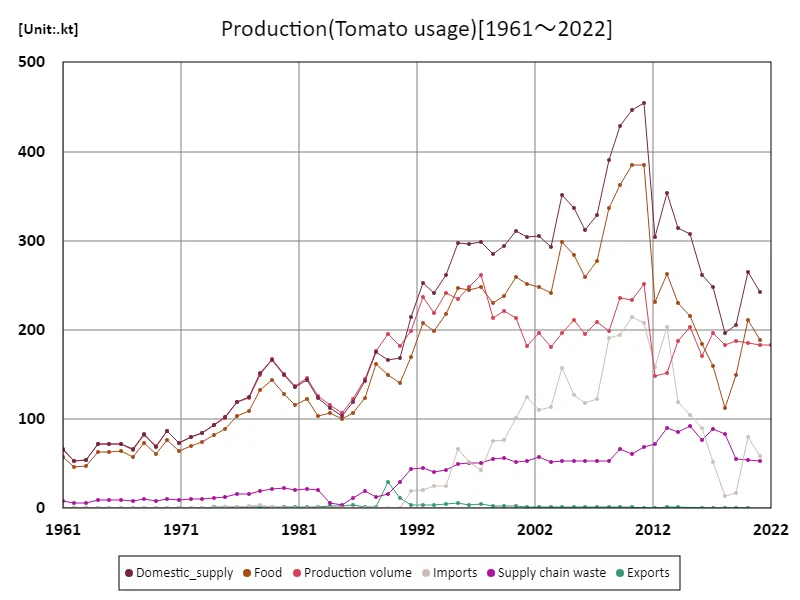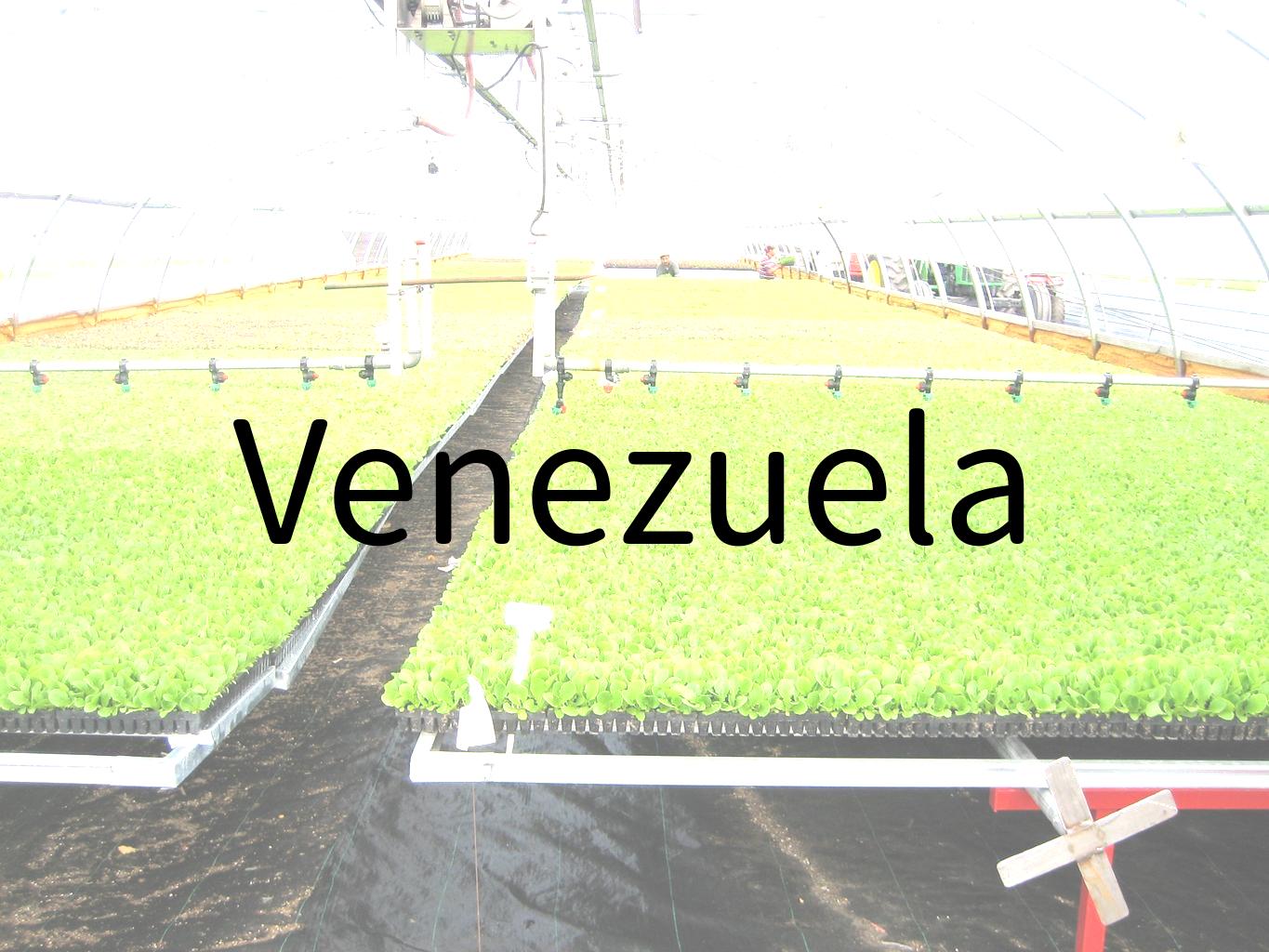Abstract
According to data for 2022, cabbage recorded the largest vegetable production in Venezuela at 108 kt, indicating an increasing trend in production over the past few years. Cabbage is a vegetable that is in high demand domestically because it is relatively easy to cultivate, and it is believed that production is adjusted in response to fluctuations in market demand. On the other hand, when it comes to tomatoes, consumption for fresh produce is the highest, followed by processed tomatoes, which account for a certain proportion. This shows that while a large area of tomato cultivation in Venezuela is devoted to the fresh market, it also caters to a certain processing industry. In terms of land use, it can be seen that high-demand crops such as cabbage and tomatoes account for a large proportion of the land, and that agricultural land is used intensively for these crops. However, there are concerns about long-term soil degradation and a shortage of water resources, and efficient land use and consideration for the environment will be key to maintaining sustainable agricultural production in the future. In this way, Venezuela’s agriculture industry dynamically adjusts according to demand for each product, while at the same time it is also at a point where it is required to improve sustainability and production efficiency.
Production (by vegetables)
Throughout the period 1961-2022, cabbage has occupied an important position in Venezuela’s vegetable production. In particular, production volume peaked in 2015 at 146kt, but in recent years, that volume has decreased to 73.9%. The decline in cabbage production can be attributed mainly to economic influences, lack of agricultural infrastructure, and changes in policies towards agricultural production. Cabbage is a vegetable with high domestic demand, and its production is an important agricultural sector, but it appears that recent supply shortages and rising production costs are having an impact. On the other hand, a downward trend from the peak can also be seen in other crops, which reflects the overall instability of agricultural production. In particular, the deterioration of soil, shortage of water resources, and increasing dependency on imports have had an impact on vegetable production, making it increasingly difficult to produce. These factors are thought to have a direct impact on the production of cabbage and other vegetables, causing a decline in production. In general, vegetable production in Venezuela is heavily influenced by the economic and social environment, and the decline in cabbage production in particular is a prime example of this. Going forward, stable agricultural policies and the introduction of sustainable agricultural technologies will be key issues.


The maximum is 454kt[2011] of Domestic_supply, and the current value is about 53.3%
Yield(by vegetable)
Looking at data from 1961 to 2022, cabbage yield in Venezuela peaked at 43.8t/ha in 2009. However, in recent years, yield has fallen to 65.8% of its peak, and current production efficiency is well below historical levels. The decline is due to aging agricultural infrastructure, labor shortages, and economic instability. In particular, cabbage production efficiency has declined due to a shortage of agricultural machinery and inputs, and restrictions on the supply of fertilizer and water. Additionally, the reduction in the area under cabbage cultivation is also contributing to the decrease in yield. Producers are increasingly switching to other crops to ensure stable profits, which has resulted in a decline in cabbage production. This resulted in lower yields per unit of land and reduced overall yields. Additionally, climate change and soil degradation also have an impact. These environmental factors have a negative impact on agricultural productivity, making it difficult to ensure a stable supply of cabbage. In the future, as sustainable agricultural techniques and efficient resource management are required, it is expected that it will take time for yields to recover.


The maximum is 43.8t/ha[2009] of Cabbage, and the current value is about 65.8%
Land use (by vegetables)
According to data from 2022, tomatoes account for the largest area of vegetable land use in Venezuela, at 8.62 kha. This figure reflects the high demand for tomatoes in the domestic market, and the fact that tomatoes are an important fresh crop, leading to a large land allocation for production. Tomatoes have the largest cultivation area, while other vegetables have an average cultivation area of 2.91kha, with the total land use being 20.4kha. Historical trends show that Venezuela’s agriculture is primarily land-concentrated in high-demand crops. There is relatively little land use for crops other than tomatoes, and the area allocated to cabbage and other vegetables is limited. This suggests that the productivity of each crop is significantly influenced by market demand and price trends. Additionally, with agricultural infrastructure remaining unstable, a major issue is how to use limited farmland efficiently. As land use bias continues, it is necessary to explore ways in which agricultural policies and land use plans can contribute more efficiently to crop production. In particular, the promotion of sustainable agriculture and improvements in irrigation techniques and soil management will be important factors in supporting agricultural productivity in the future.


The maximum is 183kt of Production volume, the average is 183kt, and the total is 183kt
Tomato usage
According to data from 1961, the largest proportion of Venezuela’s tomato production by use was for domestic supply, reaching 454 kt. The maximum value at this time indicates high demand for tomatoes in the domestic market, and suggests that tomatoes were widely consumed as a fresh food ingredient. Domestic supply tomatoes likely played an important role in home cooking, restaurants, and the retail market. Up until now, tomatoes have mainly been consumed fresh, and their consumption has been overwhelmingly high. However, over time, there has been a certain demand for tomatoes for processing, and the demand for processed products such as tomato sauce and ketchup has increased. Nevertheless, demand for domestic supply remains the largest, reflecting the importance of the tomato in Venezuelan food culture. Recent economic and agricultural challenges may have had some impact on tomato production, but demand for the domestic market remains strong and tomatoes remain an essential part of the Venezuelan diet. In the future, there will be a need to improve agricultural productivity and utilize resources efficiently in order to maintain stable production for domestic supply while also meeting demand for processing.


The maximum is 454kt[2011] of Domestic_supply, and the current value is about 53.3%



Comments